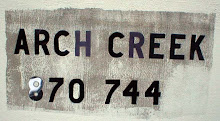Story here. Unconscionable.
Doctors treating children with a rare and severe form of epilepsy were stunned by the news. A crucial drug, H.P. Acthar Gel, that had been selling for $1,600 a vial would now cost $23,000.
The price increase, put in place over last Labor Day weekend, also jolted employers that provide health benefits to their workers and bear the brunt of drug costs.
As it turned out, the exclusive distributor of H.P. Acthar Gel is Express Scripts, a company whose core business is supposed to be helping employers manage their drug insurance programs and get medicines at the best available prices.
But in recent years, drug benefit managers like Express Scripts have built lucrative side businesses seemingly at odds with that best-price mission. A growing portion of their revenue comes from acting as exclusive or semi-exclusive distributors of expensive specialty drugs that can cost thousands of dollars. And the prices of such medicines are rising much faster than for the mainstream prescription drugs available through a wide variety of distributors.
Critics say that distributing specialty drugs with ever-higher prices runs counter to the best interests of the employers that hire companies like Express Scripts. . . .
“This sort of puts the spotlight on the greed angle of the business,” said Dr. Robert R. Clancy, a pediatric neurologist at Children’s Hospital of Philadelphia. He has been using H.P. Acthar Gel to treat a severely ill 3-year-old girl, Reegan Schwartz. Employer health plans bear most of the drug’s steep cost, with individuals in many cases making only a standard co-payment. In the case of the two courses of Acthar treatments for Reegan, the cost to her father’s health plan was about $226,000. Her father, Mike Schwartz, who works for a large pharmaceutical company, Merck, that has no ties to Acthar or its manufacturer, said he ended up paying only $60 out of pocket for the Acthar therapy.
Steve Cartt, a Questcor executive vice president, said the new price was chosen by looking at the prices of other specialty drugs and estimating how much insurers and employers would be willing to bear.
“We did some market research,” Mr. Cartt said. Talking to pediatric neurologists and others about various pricing options “gave us some comfort that the strategy would work, and physicians would continue to use the drug, and payers would pay,” he said. “The reality was better than we expected.”

No comments:
Post a Comment